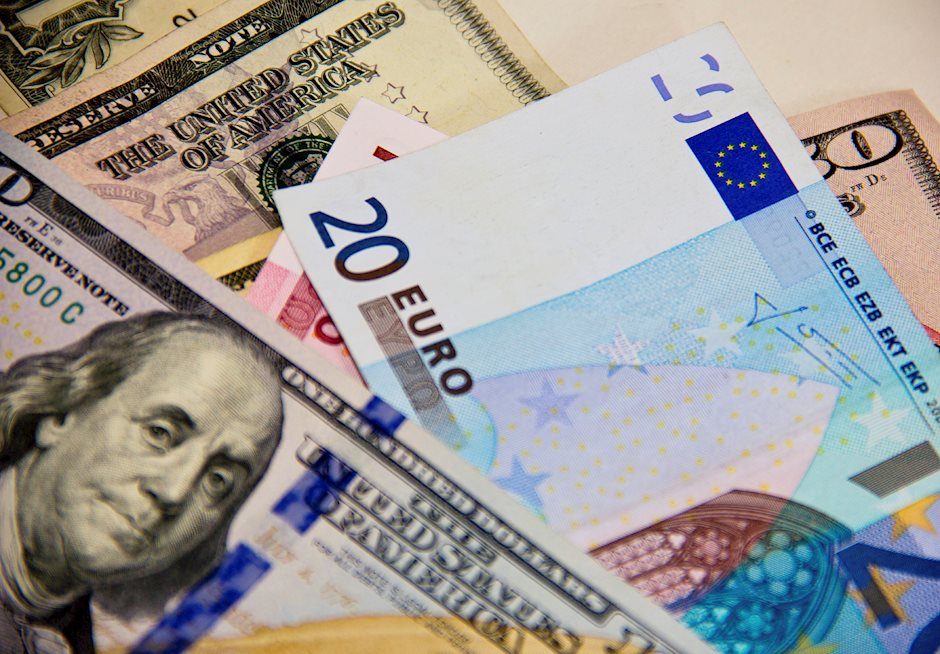Forex Today: Pound Sterling edges lower on soft UK inflation, focus shifts to US CPI

Here is what you need to know on Wednesday, August 14:
Pound Sterling stays under modest bearish pressure in the European morning as investors assess the July inflation report. In the second half of the day, the Consumer Price Index (CPI) data from the US will be watched closely by market participants. In the meantime, the European economic docket will feature a revision to second-quarter Gross Domestic Product (GDP) and Industrial Production figures for June.
Following Monday's choppy action, the US Dollar Index (DXY) turned south in the American session on Tuesday as risk flows dominated the action. Wall Street's main indexes registered strong gains, with the Nasdaq Composite leading the rally with a 2.5% upsurge, and the DXY lost 0.5%. On a monthly basis, the CPI is forecast to rise 0.2% in July following the 0.1% decline recorded in June. The core CPI, which excludes volatile food and energy prices, is seen increasing 0.2% in the same period.
US Dollar PRICE This week
The table below shows the percentage change of US Dollar (USD) against listed major currencies this week. US Dollar was the weakest against the Australian Dollar.
| USD | EUR | GBP | JPY | CAD | AUD | NZD | CHF | |
|---|---|---|---|---|---|---|---|---|
| USD | -0.80% | -0.63% | 0.40% | -0.20% | -0.97% | -0.20% | -0.20% | |
| EUR | 0.80% | 0.20% | 1.18% | 0.60% | -0.28% | 0.61% | 0.61% | |
| GBP | 0.63% | -0.20% | 1.25% | 0.41% | -0.49% | 0.40% | 0.42% | |
| JPY | -0.40% | -1.18% | -1.25% | -0.56% | -1.41% | -0.58% | -0.61% | |
| CAD | 0.20% | -0.60% | -0.41% | 0.56% | -0.82% | 0.00% | 0.02% | |
| AUD | 0.97% | 0.28% | 0.49% | 1.41% | 0.82% | 0.89% | 0.90% | |
| NZD | 0.20% | -0.61% | -0.40% | 0.58% | -0.00% | -0.89% | 0.01% | |
| CHF | 0.20% | -0.61% | -0.42% | 0.61% | -0.02% | -0.90% | -0.01% |
The heat map shows percentage changes of major currencies against each other. The base currency is picked from the left column, while the quote currency is picked from the top row. For example, if you pick the US Dollar from the left column and move along the horizontal line to the Japanese Yen, the percentage change displayed in the box will represent USD (base)/JPY (quote).
The UK's Office for National Statistics reported early Wednesday that the annual CPI inflation edged higher to 2.2% from 2%. This reading came in below the market expectation of 2.3%. Additionally, the annual core CPI rose 3.3%, down from the 3.5% increase recorded in June. Other details of the report showed that the annual PPI - Input increased 0.4% and the Retail Price Index rose 3.6%, compared to analysts' estimate of 3.3%. GBP/USD turned south following these figures and was last seen trading in negative territory below 1.2850.
The Reserve Bank of New Zealand (RBNZ) announced in the Asian session that it lowered the policy rate by 25 basis points to 5.25% after the August meeting. "We are confident inflation is back in its target band we can commence re-normalize rates," RBNZ Governor Adrian Orr said in the post-meeting press conference. NZD/USD faced heavy selling pressure following the RBNZ event and was last seen trading slightly above 0.6000, where it was down more than 1% on a daily basis.
USD/JPY failed to make a decisive move in either direction on Tuesday. The pair extends its sideways grind slightly above 147.00 in the European morning on Wednesday.
EUR/USD broke out of its one-week-old trading range on Tuesday and gained more than 0.5%. The pair continues to stretch higher in the European session and was last seen trading a few pips above 1.1000.
Gold staged a technical correction following Monday's upsurge and registered small losses on Tuesday. XAU/USD stays relatively quiet and fluctuates at around $2,470 early Wednesday.
Inflation FAQs
Inflation measures the rise in the price of a representative basket of goods and services. Headline inflation is usually expressed as a percentage change on a month-on-month (MoM) and year-on-year (YoY) basis. Core inflation excludes more volatile elements such as food and fuel which can fluctuate because of geopolitical and seasonal factors. Core inflation is the figure economists focus on and is the level targeted by central banks, which are mandated to keep inflation at a manageable level, usually around 2%.
The Consumer Price Index (CPI) measures the change in prices of a basket of goods and services over a period of time. It is usually expressed as a percentage change on a month-on-month (MoM) and year-on-year (YoY) basis. Core CPI is the figure targeted by central banks as it excludes volatile food and fuel inputs. When Core CPI rises above 2% it usually results in higher interest rates and vice versa when it falls below 2%. Since higher interest rates are positive for a currency, higher inflation usually results in a stronger currency. The opposite is true when inflation falls.
Although it may seem counter-intuitive, high inflation in a country pushes up the value of its currency and vice versa for lower inflation. This is because the central bank will normally raise interest rates to combat the higher inflation, which attract more global capital inflows from investors looking for a lucrative place to park their money.
Formerly, Gold was the asset investors turned to in times of high inflation because it preserved its value, and whilst investors will often still buy Gold for its safe-haven properties in times of extreme market turmoil, this is not the case most of the time. This is because when inflation is high, central banks will put up interest rates to combat it. Higher interest rates are negative for Gold because they increase the opportunity-cost of holding Gold vis-a-vis an interest-bearing asset or placing the money in a cash deposit account. On the flipside, lower inflation tends to be positive for Gold as it brings interest rates down, making the bright metal a more viable investment alternative.
Author

Eren Sengezer
FXStreet
As an economist at heart, Eren Sengezer specializes in the assessment of the short-term and long-term impacts of macroeconomic data, central bank policies and political developments on financial assets.

















